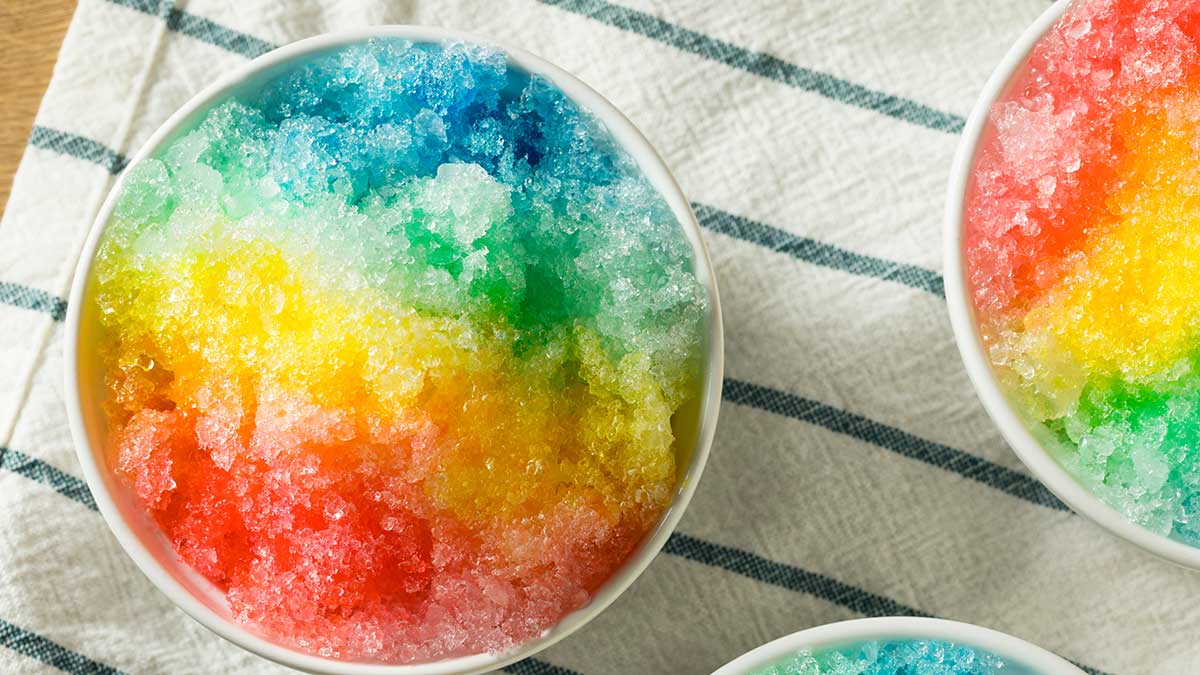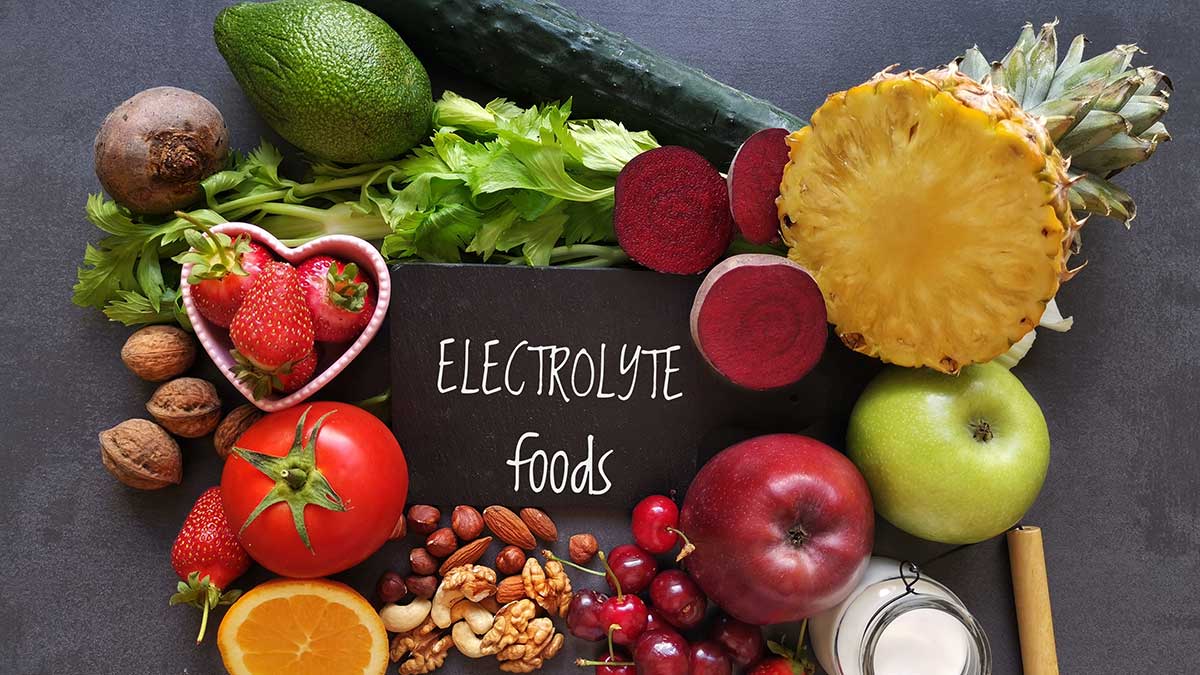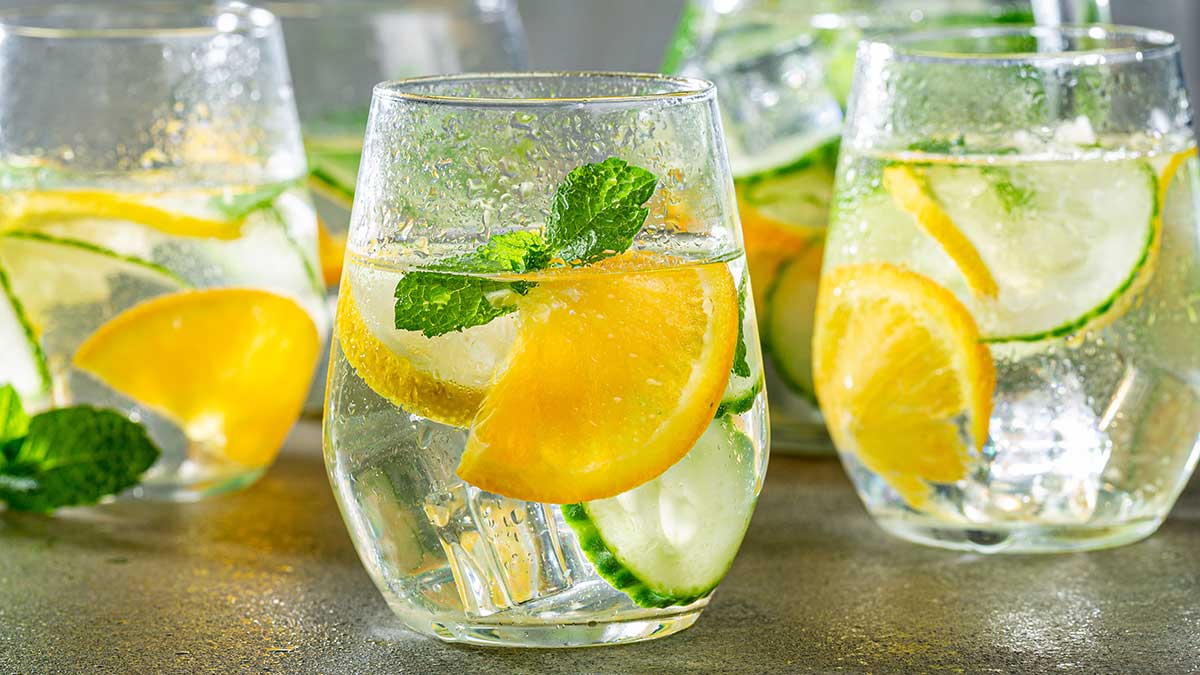When the summer heat turns up, it’s not just your wardrobe that needs a change – your diet could use a seasonal shift too. The connection between what we eat and how we feel is especially crucial during the hotter months. As an experienced doctor specializing in holistic medicine, I’d like to guide you through an exploration of the best foods and practices to keep you feeling vibrant and energetic in the summertime and beyond.
In this article, we’ll discuss the importance of balance in life, understanding the concepts of Yin and Yang in diet, and why opting for cold food might not be the best choice in the heat. We’ll also cover optimal food storage and hydration practices, the vital role of macronutrients, and the power of sweating and summertime fasting in maintaining a healthy body.
Whether you’re a seasoned health enthusiast or a beginner to holistic nutrition, this comprehensive guide is intended to provide you with easy-to-understand, science-backed insights. Here’s to a summer of balance, health, and vitality!
Balance is the Key To Life
In the realm of holistic medicine, balance is a pivotal concept. Everything about us, from the cellular level to the rhythms of our daily lives, is orchestrated around the idea of maintaining equilibrium.
The Role of Your Body’s Systems in Maintaining Balance
Our bodies have a number of remarkable systems working in unison to keep us healthy, energized, and balanced. One of the key mechanisms in maintaining our body’s equilibrium, especially when it comes to temperature regulation, involves the autonomic nervous system, hypothalamus, thyroid, and adrenal glands.
The autonomic nervous system manages involuntary bodily functions like heartbeat and digestion, while the hypothalamus is our internal thermostat. The thyroid regulates metabolism, and the adrenal glands manage stress responses. Together, these key players maintain our body temperature within the normal range of 97.8 to 98.6 degrees Fahrenheit.
Living in Balance with the Forces of Life
Our existence is a constant interplay with the forces of life. Every moment, every fraction of time, we’re engaged with these forces. As such, it’s crucial that we respect these forces to enjoy a healthy, fulfilling life on this planet. A critical aspect of this balance is understanding and working with the principles of Yin and Yang.
Knowing Your Yin and Yang For Balance
One of the most fundamental principles in holistic medicine and eastern philosophy is the concept of Yin and Yang. These two forces represent the natural dualities in our universe and are key to understanding how we can maintain balance in our lives, particularly regarding our nutrition.
The Yin: Embracing the Cool, Feminine Force
Yin is often associated with the moon and represents the feminine energy in nature. It symbolizes coolness, calmness, and a more passive approach to life. Here’s how the Yin force can be characterized:
 Peaceful and calm
Peaceful and calm- Expansive and relaxing
- Fostering of gentle emotions
- Slower, more receptive and nurturing
- Open and fluid
- Characteristics are airy, fatty, soft, and of round shape
- Tends to be voluminous and large
Yin Foods and Other Associations
Yin foods are generally cooling, fluid-rich, and tend to be less calorie-dense. Some examples include:
- Water, thin liquids like alcohol, milk, fruit juice, coffee, and tea
- Clear or light broths
- Leaves of plants and supplements
- Foods that are artificially sweetened
Other Yin associated elements are drugs of all kinds and soft vowel sounds like “eh” and “uh.”
The Yang: Tapping into the Hot, Masculine Force
Contrasting Yin, Yang is often associated with the sun and represents masculine energy. Yang symbolizes heat, high energy, and a more aggressive approach to life. Here are some key characteristics of the Yang force:
- Aggressive and excitable
- Contractive, condensed, and closed
- Energetic with sharp angles
- High-charged emotions
- Erratic, forceful, and powerful
- Dense, hard, muscular, and small in size
Yang Foods and Other Associations
Yang foods are warming, dense, and tend to be more calorie-dense. They include:
- Salt, eggs, poultry, and meat of all kinds
- Fish, minerals, cheese, and root vegetables
In addition to these, hard consonants like “KAY” and “EX” are associated with the Yang force.
In the coming sections, we’ll explore how these Yin and Yang principles apply to summer nutrition and how understanding them can help us stay energetic and balanced in the heat.
Cold Food is Not Too Cool in the Heat
While it may seem counterintuitive, reaching for ice-cold food or drinks in the sweltering heat isn’t necessarily the best way to cool down. From a holistic and physiological perspective, cold consumables can actually make your body work harder and generate more heat in the process.
Why Cold Isn’t Always Cool
When we consume very cold food or drinks, our body has to work to warm it up to our body’s temperature, around 98.6°F. This process, interestingly, results in the body generating more heat, which is the exact opposite of what we want in hot weather.
This phenomenon can be linked to the Yin-Yang principle. When Yin (the cool force) is introduced in excess, it can transform into Yang, leading to more heat. In simpler terms, excessive cold can generate warmth.

The Benefits of Hot Food
Conversely, consuming warm or hot foods and drinks can aid our body’s natural cooling mechanism. Here’s how:
- Warmth opens up blood vessels, improving circulation, which can enhance the body’s natural cooling mechanism – sweating.
- The ingestion of warm food and drinks can stimulate the body to react by cooling itself down, which is an example of how Yang (the hot force) can become Yin.
- Cooking your food can actually result in a cooling effect on your body.
The Science Behind Warm Water Ingestion
The consumption of warm water is particularly beneficial. It may lower the body’s heat storage, thus making it a great summer drink.
A 2012 study conducted on athletic bicyclists demonstrated this. The findings showed that drinking water at 50 degrees Celsius (122 degrees Fahrenheit) resulted in higher skin evaporation rates than consuming cooler liquids. The body heat storage was also lower with warm water ingestion.
The underlying reason is attributed to the warm-sensitive thermosensors in our esophagus and stomach, which can cause disproportionate modulations in sweat output.
Staying Hydrated and Replenishing Lost Salts
It’s important to note that when we sweat, we don’t just lose water – we also lose important minerals like sodium. Athletes can lose 400-1000mg of salt per hour of activity. Therefore, hydration shouldn’t only involve water; you should aim to replenish your electrolytes as well. A good rule of thumb is to aim for 200mg of sodium in every 8 ounces of fluid, taken slowly.
For Better Health in Heat
When the temperatures rise, knowing what to eat and drink and how to prepare your meals can make a significant difference to your health, energy levels, and overall comfort. Here are some tips to help you navigate your nutrition during the heat of summer:
Staying Hydrated the Right Way
Hydration is key in the heat, but not all beverages are created equal:
- Opt for mineral water and coconut water, which are rich in essential electrolytes.
- Consider adding a pinch of salt to your water and enhancing the flavor with some lemon, cucumber, and a touch of mint. This not only replenishes sodium lost through sweat but also makes for a refreshing summer drink.
Foods and Cooking Styles to Avoid
Certain foods and cooking methods can make you feel hotter and should be minimized during the summer:
- Heavily salted and sweetened foods, including most junk foods and sugary drinks.
- Artificial sweeteners, such as sucralose (Splenda), aspartame (Nutrasweet, Equal), acesulfame K, saccharin, and cyclamate. Beware of foods and drinks labeled as zero, low sugar, no sugar, diet, or low fat, as these often contain artificial sweeteners.
- Daily baked foods, including meat and plants, as these can dry out the body. Examples include baked poultry, eggplant, or lasagna.
- Avoid grilling, baking, charbroiling, smoking, and barbecuing. These cooking methods can increase heat in the body.
- Never microwave your food or water. Microwaving can change the nature of your food and affect its nutritional value.
Foods and Cooking Styles to Embrace
There are numerous foods and cooking methods that can help keep your body cool:
- Choose whole foods that are lightly or moderately heated, such as those blanched, steamed, sautéed, or lightly toasted.
- Use non-coated pots, pans, and containers for cooking to ensure no unwanted substances get into your food.
- Remember not to rely solely on raw or cold foods. Overly cold foods can stress your body’s thermoregulators, especially in hot weather.
- Opt for moderate portions and a variety on your plate. This ensures a balanced intake of different nutrients.
- Slowly chew your food. This aids in digestion and prevents overeating.
- Sip on a non-iced or cold beverage throughout the day, but avoid guzzling it down all at once. Your body absorbs hydration more efficiently when it’s introduced gradually.
- Eat in a calm, relaxed position without a lot of talking or chatter. Mindful eating can enhance digestion and the overall eating experience.
Food Storage
Storing food properly is vital to ensure it stays fresh, retains its nutritional value, and remains safe to eat. This is especially crucial during the summer months when high temperatures can accelerate food spoilage. Here are some guidelines to follow:
Choose the Right Containers
Your choice of storage container can have a significant impact on the quality of your food:
- Opt for glass, clay, earthenware, copper, or stainless steel containers. These materials don’t react with food or leach any harmful substances.
- Avoid storing food in plastic containers. Plastic particles can migrate into your food, especially when the plastic is exposed to heat.
Be Careful When Taking Food on the Go
If you’re planning a summer picnic or a day at the beach, be mindful of the kinds of food you bring:
- Choose foods that won’t spoil easily in the heat.
- Pack your food appropriately. Use insulated containers for foods that need to stay cold.
- Remember not to reheat your food in plastic containers in a microwave. The heat can cause harmful substances to leach out of the plastic and into your food.
Balancing Proteins, Fats, Carbs, Electrolytes, and Minerals for Optimal Vitality
When it comes to maintaining energy and vitality, especially during the hot summer months, it’s crucial to ensure a balanced intake of proteins, fats, carbohydrates, electrolytes, and minerals. Let’s dive deeper into the importance of each and how they support our body’s function and well-being in the heat.
Prioritize Plant Proteins
Incorporating a variety of plant proteins in your diet is a good starting point. Sources such as beans, legumes, seeds, nuts, and mushrooms not only provide protein but also come with an array of other nutrients and antioxidants.
During the hotter months, opt for more “above ground” plants to balance out the heavier energies of root vegetables. Leaves, stems, peas, or podded types are excellent choices.
Choose Low-Glycemic Fruits
While all fruits have their place in a healthy diet, opting for low-glycemic (less sugary) fruits can be beneficial, especially in the heat. Berries, pomegranate, cherries, grapefruit, avocado, coconut, papaya, and mangoes are some tasty, nutrient-packed options.
Opt for Light Fish and Meat Proteins
If you consume fish and meat, remember to choose lighter options and prepare them with “cooling” marinades such as citrus and herbs.
Fish proteins like flounder, mahi, trout, snapper, scallop, oyster, squid, and white fish can be particularly beneficial. They can be cooked on the stovetop, broiled, or baked, but it’s best to limit their intake to occasional use.
Similarly, if you’re a meat-eater, opt for light meats and avoid heavy frying or sauces. Reducing meat intake during hot weather can help keep your body cool.
Enjoy Homemade Vegetable Soups
Another excellent way to stay hydrated and nourished is by consuming homemade vegetable soups. You can create a mix of seasonal veggies such as celery, onions, radishes, mushrooms, along with herbs and a dash of light pepper. These soups can provide essential electrolytes and minerals that are vital for maintaining energy and vitality in the heat.

Electrolyte Solution to Replenish Your Minerals Lost
Staying hydrated during hot summer days is essential, but it’s not just about water. Minerals like potassium, magnesium, calcium, selenium, phosphorus, sulfur, zinc, copper, iodine, and others are also needed for your body to function optimally. These vital substances, known as electrolytes, can be lost through sweat, so it’s important to replenish them. Here’s how:
Eat Whole Foods Rich in Minerals
Whole foods are the best source of the vital minerals your body needs. They’re rich in a variety of nutrients, and their natural composition makes the nutrients more bioavailable to your body. So, include a variety of fruits, vegetables, legumes, seeds, nuts, and lean proteins in your diet.
Beware of Pre-made Bars and Drinks
While they might be convenient, pre-made bars, powders, and most canned foods are not the best sources of electrolytes. They’re often heavily processed and can contain an array of artificial ingredients. Additionally, they may be excessively sweet or salty.
Limit Smoothies and Blended Drinks
While smoothies can be a great way to get a nutrient boost, they are not ideal for everyday consumption, especially for individuals with heat sensitivity. The process of blending can generate heat, and drinking these beverages frequently could contribute to overall body heat.
Prepare Your Own Electrolyte Solutions
Creating your own electrolyte drinks can be a simple and effective way to replenish lost minerals. Freshly squeezed fruit and vegetable juices are excellent choices. You can also consider adding a pinch of quality sea salt for sodium and other trace minerals.
Consider Supplementation
While a balanced diet should cover most of your nutritional needs, certain circumstances may require supplementation. Essential vitamins and minerals like COQ10, vitamin D3, vitamin C, and B12 can help prevent deficiencies. Always consult with a healthcare provider before starting any supplement regimen.
Cooling Your Body with Sweating and Exhaling
Sweating is a natural, vital process that our bodies use to cool down and maintain a balanced internal temperature. Additionally, exhaling also helps remove heat from the body. Let’s explore how these processes function and their significance in overall health.
The Role of Sweat in Cooling the Body
Sweating is your body’s built-in air conditioning system. When your body heats up, it releases water and salt in the form of sweat. As this sweat evaporates from your skin, it helps cool down your body.
The Importance of Natural Cooling
While artificial air conditioning can provide comfort in extreme heat, it can also distort our body’s natural cooling processes. In fact, relying heavily on air conditioning could potentially reduce our body’s ability to adapt to varying temperatures, making us more sensitive to heat.
Balanced Eating to Reduce the Need for Air Conditioning
Adopting a balanced diet suited to the season can help regulate your body’s internal temperature and reduce the need for artificial air conditioning. For instance, as we’ve discussed, eating light, plant-based meals and staying hydrated can help your body stay cool in the summer heat.
Summertime Fasting
As the summer sun blazes, one surprising way to maintain your body’s balance and promote overall health is through strategic fasting. This doesn’t just mean abstaining from food randomly, but rather following specific patterns of eating and not eating, which we call intermittent fasting. Let’s explore the benefits of this approach and some methods you can try.
Benefits of Fasting
- Reduced Inflammation: Fasting has been shown to help reduce inflammation, a common root cause of many chronic health conditions.
- Weight Loss: It can support weight loss by helping you consume fewer calories and boosting metabolism.
- Improved Blood Sugar: Fasting can help regulate insulin levels and improve blood sugar control.
- Improved Mental Health: Some people report better mood and mental clarity during fasting periods.
- Enhanced Energy: Fasting can promote the process of autophagy, the body’s way of cleaning out damaged cells to regenerate newer, healthier cells, leading to increased energy.
- Hormone Rebalance: Fasting can help balance your body’s hormones, affecting everything from mood to metabolic health.
- Better Sleep: Regular eating patterns can contribute to more consistent sleep patterns.
- Reduced Cravings: Intermittent fasting can help control cravings and reduce the desire to snack.
- Skin Improvements: Some people notice improvements in their skin health, including a potential reduction in breakouts and conditions like eczema.
Different Ways to Fast
Before diving into fasting, please note that while the benefits are attractive, fasting is not suitable for everyone. Always consult a healthcare provider before starting a fasting regimen. Here are some popular methods of fasting:
Time Restricted Eating (TRE)
TRE involves limiting your eating to a certain number of hours each day:
- 12:12 Method: Eat within a 12-hour window each day, then fast for the other 12 hours.
- 10:14 Method: Eat within a 10-hour window each day, then fast for 14 hours.
- 8:16 Method: Eat within an 8-hour window, then fast for 16 hours.
- 6:18 Method: Eat within a 6-hour window, then fast for 18 hours.
- 4:20 Method: Eat within a 4-hour window, then fast for 20 hours.
Full Day Fasting
Full day fasting involves not eating for a full 24 hours, once or twice a week. Fasting for three consecutive days or more should only be done under professional guidance.
Important Considerations When Fasting
Embarking on a fasting journey requires some important considerations. Here are a few key points to remember:
Food Selection is Vital
While fasting, particularly Time Restricted Eating (TRE), can naturally reduce your caloric intake, this isn’t always the case. If you’re consuming high-calorie foods during your eating windows, you might not actually eat less. This is why it’s crucial to be selective with your food choices. Opt for healthy, whole foods that are nutrient-dense but not overly high in calories.
Stay Hydrated
Regardless of the fasting method you choose, hydration is non-negotiable. Even while fasting, you must continue to drink water or other hydrating fluids. Adequate hydration is key to supporting bodily functions and preventing dehydration.

Stay Cool and Balanced: Your Summer Nutrition Guide
As we wrap up this guide to staying fit and energetic in the heat of summer, it’s essential to remember that balance is the foundation of good health. From the foods we choose to eat to the ways we prepare them, every choice we make can either help maintain our internal balance or tip the scales in the wrong direction.
Incorporating these tips into your daily life doesn’t mean undergoing a radical diet overhaul. Instead, see these suggestions as tools you can use to make better-informed decisions about what you eat and drink.
Remember, too, that our bodies are unique, and what works for one person might not work for another. It’s always wise to listen to your body and adjust accordingly. If a specific food or practice doesn’t sit well with you, don’t force it.
Most importantly, enjoy your summer. Savor the fresh, vibrant foods of the season, and take pleasure in your meals. Healthy eating is not just about nourishing our bodies but also about bringing joy to our senses.
Remember to hydrate, balance your Yin and Yang, and embrace the natural ways your body cools itself. Let’s make this summer a season of great health, balance, and vitality!
References & Recommended Reading
- Bain, A. (2012). Body Heat Storage During Physical Activity is Lower with Hot Fluid Ingestion Under Conditions that Permit Fluid Evaporation. Acta Physiologica, 206(2), 98-108. This study dives deeper into the effects of hot fluid ingestion on body heat storage during physical activity.
- Kushi, M. (2003). The Macrobiotic Path to Total Health: A Complete Guide to Preventing and Relieving More than 200 Conditions and Chronic Disorders Naturally. Ballantine Books, USA. This book offers a comprehensive guide to macrobiotics and how it can be used to prevent and relieve various conditions naturally.
- Pitchford, P. (2002). Healing with Whole Foods. Atlantic Books, USA. This is a valuable resource for anyone interested in adopting a diet centered around whole foods for healing and wellness.
- Scunziano Singh, M. (2018). Be Consciously Healthy: Awaken to Your Best Life. NOW SC Press, USA. This book provides insights on achieving health consciousness and awakening to your best life.
- Scunziano Singh, M. (2019). The Conscious Eat: Healthy Cooking and Lifetime Recipes of Peace. NOW SC Press, USA. The book offers a selection of recipes that promotes healthy cooking for a lifetime of peace.
source https://wellcomeomcenter.com/what-to-eat-in-the-heat-a-holistic-approach-to-summer-nutrition/

No comments:
Post a Comment